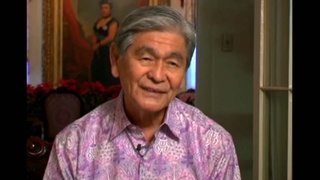Interviews
The various realities of Nikkei in Latin America (Spanish)
(Spanish) I think that the development of this thing called Nikkei has been somewhat distinct from country to country. I’m referring to Latin America in general. Through the Pan-American Association of Nikkei, I’ve had the opportunity to come into contact with various Nikkei realities, and yes, there are some common roots, however there are also certain differences. Perhaps the greatest difference I see comes from the number of Japanese that settled in a given place. In places where there are a lot of Japanese, there are obviously Japanese schools. There are Japanese clubs, Japanese churches, or Buddhist temples – whatever, I don’t know! By contrast, in countries like Chile, there was none of that. Therefore, in the development of countries where there were a lot of Japanese, maybe the customs, the culture lasted longer. Maybe it wasn’t growing, but it lasted longer in those places. In the case of Chile, in my case, I think we drifted quite a bit towards adapting to Chilean society, and as fast as possible in order to get by as best we could. So, for example, within this context you see that in religion, for example, in Chile there’s no…uh…the majority religion is Catholicism, and perhaps therefore all of us ended up embracing that religion. Something else, for example, is that since the nucleus of Japanese and Nikkei was so small, weddings, marriages to locals was much greater than in other places. Naturally, this led to, among other things, a very rapid loss of the language.
Date: October 7, 2005
Location: California, US
Interviewer: Ann Kaneko
Contributed by: Watase Media Arts Center, Japanese American National Museum
Explore More Videos

Ethnic diversity
(b.1926) Democratic politician and three-term Governor of Hawai'i


Christian gatherings in homes
(1926 - 2012) Scholar and professor of anthropology. Leader in the establishment of ethnic studies as an academic discipline

Not bringing shame to family
(1926 - 2012) Scholar and professor of anthropology. Leader in the establishment of ethnic studies as an academic discipline

Role of the Japanese American National Museum
(1926 - 2012) Scholar and professor of anthropology. Leader in the establishment of ethnic studies as an academic discipline

Going back to Hawaii
An expert researcher and scholar on Japanese immigrant clothing.

Picture brides and karifufu
An expert researcher and scholar on Japanese immigrant clothing.

Preserving traditional Japanese culture
(b.1964) California-born business woman in Japan. A successor of her late grandmother, who started a beauty business in Japan.

Food growing up
(b.1948) Nikkei from Southern California living in Japan.

Being on the outside
(b.1948) Nikkei from Southern California living in Japan.

Working at the magazine
(b.1948) Nikkei from Southern California living in Japan.

Kibei schoolchildren in Hiroshima, Japan
(b.1913) Kibei from California who served in the MIS with Merrill’s Marauders during WWII.

Learning American cooking
(b.1909) Nisei from Washington. Incarcerated at Tule Lake and Minidoka during WWII. Resettled in Chicago after WWII

Understanding Sansei taiko (Japanese)
(b.1943) Shin-issei grand master of taiko; founded San Francisco Taiko Dojo in 1968.

Rediscovery of Japanese culture through taiko (Japanese)
Shishimai (Lion dance) and Taiko player with San Francisco Taiko Dojo.
